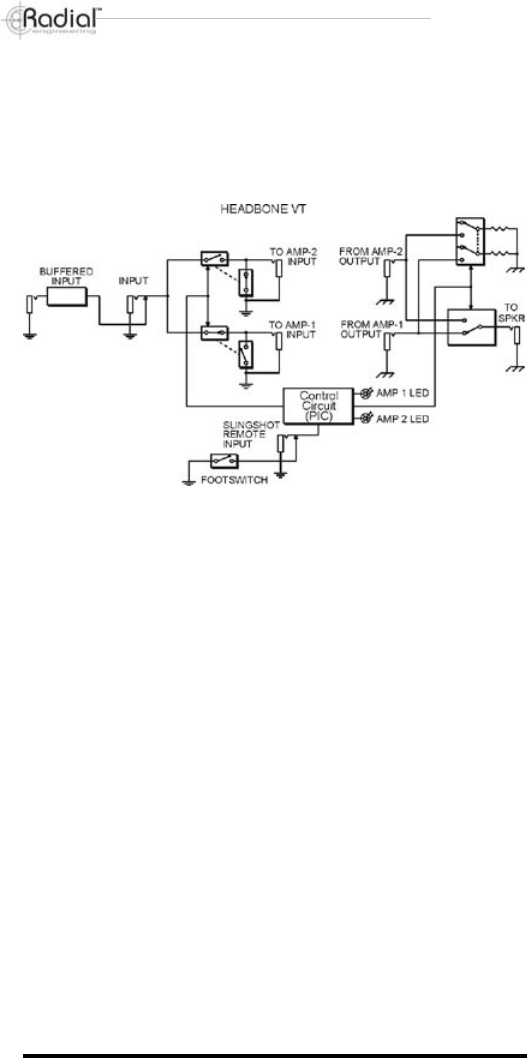
True to the Music
Radial Engineering Headbone Owner’s Manual
To best explain the workings of the Headbone, take a minute to study
the block diagram. Reading from left to right, you can see the inputs, the
high-impedance guitar switching, the control circuitry and the speaker
level switching.
The Input Signal Path
The Radial Headbone’s input signal path is 100% discreet Class-A.
This means that it employs a whole bunch of parts such as resistors and
capacitors instead of a transistor to buffer (amplify) the guitar signal to a
manageable level. Class-A circuits are preferred over integrated circuits
(IC chips) as they are more natural sounding.
Buffered and Direct Inputs
The Headbone gives you the choice of two inputs: one buffered and one
direct or unbuffered. The reason we do this is that when you are driving
a pre-buffered signal, there is no advantage to buffering the signal again.
In some cases, two buffers in series could add distortion or noise.
If you are connecting the guitar directly to the Headbone, use the Buff-
ered Input. If you use a buffering device (pre-amp), such as the Radial
Loopbone or Switchbone, you would plug the output of the device into
the unbuffered Direct Input. Some effect pedals use a buffering stage
in their design, some do not. If you are connecting an effect pedal before
the Headbone, the best way to decide which input to use is to let your
ears choose the one that sounds best to you.
Switching Guitar Signals
To make the Headbone work, it cannot simply switch the amplifier’s
speaker outputs. The inputs to the amp must be switched as well. It is
important that the input going to the unused head be turned off so that
while on standby, it is not trying to amplify a signal with nowhere to go.
The Headbone simultaneously switches the amp’s inputs and outputs.
Actual head switching is performed by a series of opto-couplers, which
are made to ramp-up and ramp-down the guitar signal in such a way as
7


















